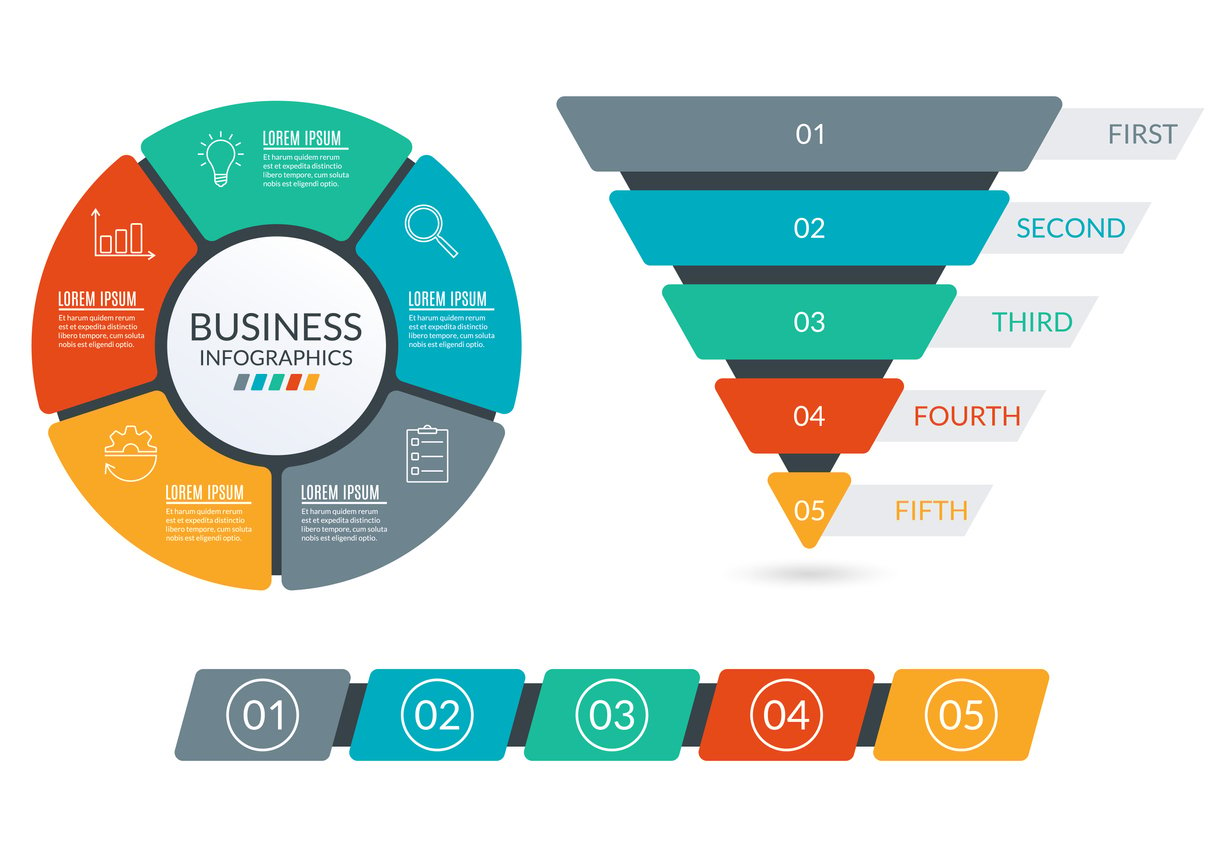
B2B Telemarketing: Strategies, Benefits & Best Practices for Success
 Updated on
Updated on
 By Carlos Correa
By Carlos Correa
Carlos Correa
Carlos has been involved in the sales space for well over ten years. He began in the insurance space as an individual sales agent, managing teams as s...
learn more
Carlos Correa
Carlos has been involved in the sales space for well over ten years. He began in the insurance space as an individual sales agent, managing teams as s...
Table of Contents
Table of Contents
Did you know that even now, with automation and social media, B2B telemarketing remains a powerful tool for driving business growth? While countless articles herald the "death of cold calling," smart businesses are leveraging the phone to forge connections, qualify leads, and secure lucrative deals. But how do you navigate this dynamic landscape and separate yourself from the sea of unwanted calls?
This guide has the secrets to successful B2B telemarketing. It discusses winning strategies, hidden benefits, and the best practices for turning skeptical prospects into loyal customers.
Let's start selling!
Difference Between B2B Telemarketing and B2C

While both B2B (business-to-business) and B2C (business-to-consumer) telemarketing share the goal of generating sales, their approaches differ significantly. Understanding these distinctions is crucial for crafting an effective outreach strategy. Let's break down the key differences in the table below:
|
Aspect |
B2B Telemarketing |
B2C Telemarketing |
|
Target Audience |
Businesses and organizations |
Individual consumers |
|
Buying Decision |
Complex, multiple stakeholders |
Simpler, individual decision |
|
Sales Cycle |
Longer, with nurturing |
Shorter, more immediate |
|
Focus |
Value proposition, ROI |
Features, benefits, emotions |
|
Call Objective |
Qualification, relationship building |
Lead generation, direct sales |
|
Product Knowledge |
Requires in-depth industry and product knowledge |
Basic product knowledge is often sufficient |
|
Call Volume |
Fewer, more personalized calls |
Higher volume of calls, often scripted |
Here's a closer look at each difference:
- Target Audience: B2B telemarketing requires in-depth research to identify the right decision-makers. B2C telemarketing focuses on individual consumers with varying needs and interests.
- Buying Decision: B2B purchases typically involve a longer sales cycle with multiple stakeholders who need to be convinced. Conversely, B2C purchases can be more impulsive, driven by individual needs and desires.
- Sales Cycle: B2B telemarketing often involves a multi-step process with nurturing leads before closing the deal. B2C telemarketing can lead to quicker sales, especially for readily available consumer products.
- Focus: B2B telemarketing pitches center around the value proposition and the return on investment (ROI) a product or service offers the target business. B2C telemarketing focuses on highlighting product features and benefits and how they address consumers' emotional wants and desires.
- Call Objective: B2B telemarketing calls aim to qualify leads, build relationships, and schedule meetings for further discussions. B2C telemarketing calls often aim for direct sales or lead generation for further nurturing through other marketing channels.
- Product Knowledge: B2B agents must possess in-depth knowledge of the industry and products, as they often deal with specialized or technical goods and services. Generally, B2C telemarketers require only basic product knowledge, as the products or services offered are usually more straightforward and less technical.
- Call Volume: B2B telemarketing involves fewer calls that are more personalized and tailored to the needs of each business prospect. On the other hand, B2C telemarketing is characterized by a higher volume of calls, often following a scripted approach to reach as many potential consumers as possible.
Objectives of B2B Telemarketing

B2B telemarketing serves a multitude of purposes beyond simply making sales calls. Here's a breakdown of the key objectives and how they contribute to your overall business goals:
1. Lead Generation and Qualification
One of the core objectives of B2B telemarketing is lead generation and qualification. This process involves:
- Identifying Potential Business Clients: B2B telemarketing services focus on pinpointing companies that could benefit from your products or services. This involves research and analysis to create a list of potential prospects.
- Qualifying Leads Based on Predefined Criteria: Every lead is unique. Therefore, B2B telemarketing uses specific criteria to assess the viability of leads, ensuring that only the most promising prospects proceed to the next stage. This step helps save time and resources by focusing on high-potential opportunities.
2. Sales Conversion
Turning qualified leads into customers is a primary goal of B2B telemarketing. The strategies include:
- Converting Leads into Customers: B2B telemarketing agencies employ skilled telemarketers who engage with prospects, addressing their needs and concerns to facilitate a purchase decision.
- Upselling and Cross-Selling to Existing Clients: You can also leverage B2B telemarketing to strengthen relationships with existing clients. Upselling involves promoting higher-tier versions of your product or service, while cross-selling focuses on offering complementary products that enhance their current purchase.
3. Market Research
B2B telemarketing is an excellent tool for gathering valuable market insights, which can guide strategic decisions. The activities involved are:
- Gathering Insights on Market Trends and Customer Needs: Through direct interactions, telemarketers can collect data on current market trends, customer preferences, and emerging needs. This information is crucial for staying ahead of the competition.
- Collecting Feedback for Product and Service Improvement: Telemarketing calls are a two-way street. You can use them to actively solicit feedback from customers about their experience with your company, product, or service. This feedback is crucial for making data-driven decisions to improve your offerings and stay ahead of the competition.
4. Customer Relationship Management
Building and maintaining strong business relationships is essential for long-term success. B2B telemarketing plays a significant role in:
- Building and Maintaining Business Relationships: B2B sales are often built on long-term relationships. These calls are a great way to connect with decision-makers, personalize communication, and build rapport. Such interactions foster trust and loyalty, which are essential for securing repeat business and positive word-of-mouth referrals.
- Providing Personalized Customer Service and Support: B2B telesales companies often offer personalized support, ensuring that clients receive the attention and assistance they need. This high level of service helps address issues promptly and maintain client satisfaction.
Research indicates that 86% of B2B buyers are willing to pay more for a superior customer experience, emphasizing the importance of personalization in fostering strong relationships.
Each of these goals is crucial for a business's overall growth and sustainability. When you effectively leverage B2B telemarketing services, you can achieve significant competitive advantages and drive substantial growth.
Key Components of a Successful B2B Telemarketing Campaign

Crafting a winning B2B telemarketing campaign requires a strategic approach. Here are the fundamental components that will set you up for success:
1. Identifying Your Target Audience
The foundation of any effective B2B telemarketing campaign rests on a deep understanding of your target audience. This involves:
- Defining and Understanding Your Target Market: Who are you trying to reach? Start by clearly defining your ideal customer profile. Consider factors like industry size, location, and decision-making hierarchy. Research their business challenges and buying behaviors to tailor your message accordingly.
- Creating Detailed Buyer Personas: Go beyond demographics. Develop detailed buyer personas that paint a vivid picture of your ideal customer. Consider their goals, motivations, and pain points. This level of detail allows you to craft B2B telemarketing scripts and messaging that resonate with your target audience on a personal level.
According to research, businesses that invest time in understanding and segmenting their target market can see a 760% increase in revenue!
2. Scripting and Messaging
B2B telemarketing scripts are not about robotic pitches. They serve as a roadmap to guide conversations and ensure consistency. Here's how to craft effective scripts and messaging:
- Developing Effective Telemarketing Scripts: Your scripts should be clear, concise, and value-driven. Focus on highlighting the specific benefits your product or service offers to the target audience's unique challenges. Avoid generic sales pitches and, instead, personalize your message to resonate with each prospect.
- Crafting Personalized and Persuasive Messages: B2B telemarketing is a conversation, not a monologue. Your script should act as a springboard for genuine dialogue. Practice active listening and tailor your responses based on the prospect's needs and concerns.
Statistics show the effectiveness of personalization: 57% of B2B buyers expect vendors to personalize their content when they're just learning about their products and services.
3. Training and Development
Your telemarketing team is the frontline of your campaign. Investing in their training and development is crucial for maximizing success:
- Importance of Training Telemarketing Representatives: Effective B2B telemarketing requires a specific skillset. Training equips your team with the knowledge and tools they need, including product expertise, objection-handling techniques, and effective communication skills.
- Ongoing Skill Development and Coaching: The B2B space is constantly changing. Provide ongoing coaching and development opportunities for your telemarketing representatives to ensure they stay up-to-date with industry trends, product updates, and best practices in B2B telemarketing.
Research from Brevet indicates that companies that provide continuous training and coaching see 50% higher net sales per representative than those that don't invest in ongoing development.
4. Technology and Tools
The power of B2B telemarketing is amplified by leveraging the right technology and sales tools. Here's how to integrate technology for a seamless and efficient campaign:
Using CRM Systems for Managing Leads and Interactions
Customer Relationship Management (CRM) systems are indispensable in B2B telemarketing services. These systems help organize and manage leads, track interactions, and maintain detailed records of each prospect's journey through the sales funnel.
|
Features |
Benefits |
|
Lead Management |
CRM systems allow telemarketers to categorize and prioritize leads based on various criteria such as industry, company size, and level of interest. This ensures that the most promising leads receive the necessary attention. |
|
Interaction Tracking |
Every interaction with a prospect is logged in the CRM, providing a comprehensive history that telemarketers can refer to for context in future calls. This leads to more personalized and informed conversations. |
|
Follow-Up Scheduling |
CRM systems help in scheduling follow-up calls and reminders, ensuring that no lead falls through the cracks. Timely follow-ups can significantly increase conversion rates. |
|
Reporting and Analytics |
Advanced CRM systems such as ours offer robust reporting features that provide insights into the performance of telemarketing campaigns. These insights help in identifying what strategies are working and where improvements are needed. |
Leveraging Dialing Software and Call Analytics Tools
Gone are the days of manual dialing. Automated dialing software streamlines the calling process, allowing your representatives to spend more time on productive conversations.
Additionally, call analytics tools provide valuable insights into call performance. You can track metrics like call duration, call recording, and call outcomes. By analyzing this data, you can identify areas for improvement and optimize your B2B telemarketing scripts and strategies for better results.
Measuring the Success of a B2B Telemarketing Campaign

Just like any marketing initiative, measuring the success of your B2B telemarketing campaign is crucial. By tracking key metrics and analyzing the data, you can identify areas of strength and weakness, refine your approach, and maximize your return on investment (ROI).
Here's how to do exactly that and ensure you're maximizing the potential of B2B telemarketing services.
Key Performance Indicators (KPIs) to Track
Several key performance indicators (KPIs) provide valuable insights into the effectiveness of your B2B telemarketing efforts. Here are some of the most important ones to monitor:
- Call Volume and Duration: This provides a basic understanding of your telemarketing activity. Track the number of calls made, the average call duration, and the number of successful connections with qualified prospects. An increase in call volume and duration, coupled with a rise in qualified conversations, indicates a productive campaign.
- Conversion Rates: The true test of a B2B telemarketing campaign lies in its ability to convert leads into sales. Track the conversion rate at various stages of the sales funnel, such as the percentage of calls that convert to qualified leads, leads that convert to demos or meetings, and, ultimately, leads that convert to paying customers.
- Lead Quality and Sales Pipeline Contribution: Leads aren't the same, and B2B telemarketing should focus on generating high-quality leads that align with your ideal customer profile. Track the quality of leads generated through your telemarketing efforts and how many of those leads contribute to a healthy B2B sales pipeline.
- Customer Acquisition Cost (CAC): This metric reveals how much it costs to acquire a new customer through B2B telemarketing. It's calculated by dividing your total telemarketing campaign costs by the number of customers acquired. By monitoring CAC, you can assess the efficiency of your telemarketing efforts and identify areas for cost optimization.
- Return on Investment (ROI): Ultimately, the success of your B2B telemarketing campaign hinges on its ability to generate revenue. Track your ROI by measuring the total revenue generated from leads acquired through telemarketing against the total cost of the campaign. A positive ROI indicates a successful campaign that delivers a strong return on your investment.
Data Analysis and Reporting
Tracking KPIs is just the first step. Regularly analyzing the data you collect from your B2B telemarketing activities is essential for continuous improvement. Here's how to leverage data for better results:
Tracking and Analyzing Telemarketing Performance Metrics
Regularly tracking metrics such as call volume, duration, conversion rates, lead quality, CAC, and ROI provides a comprehensive view of the campaign's performance. B2B telemarketing services can effectively gather and analyze this data using advanced CRM systems and call analytics tools.
Additionally, identifying trends over time, such as peak calling hours or successful script variations, helps optimize telemarketing efforts. By understanding what works best, telemarketers can refine their approaches to achieve better results.
Using Insights to Refine and Improve Telemarketing Strategies
Data analysis helps pinpoint campaign weaknesses, such as low conversion rates or high CAC. Addressing these areas can lead to significant performance improvements.
This continuous improvement process ensures that telemarketing efforts remain effective and aligned with business objectives.
Lastly, comparing current performance against industry benchmarks or past campaign results helps set realistic goals and measure progress. It also motivates telemarketing B2B teams to strive for higher standards.
Challenges that B2B Telemarketing Companies Face and How to Overcome Them

Despite its effectiveness, B2B telemarketing presents its own set of hurdles. Here's a look at some common challenges and strategies to address them:
1. Customer Rejection and Team Motivation
B2B telemarketing can be a numbers game, and rejection is inevitable. However, high rejection rates can quickly demotivate even the most enthusiastic team. Here's how to navigate this challenge:
- Dealing with High Rejection Rates: Rejection is part of the process. Equip your B2B telemarketing representatives with the tools and training to handle objections effectively. Role-playing exercises can help them anticipate resistance and develop persuasive responses. Focus on the quality of conversations over sheer quantity of calls.
- Keeping the Team Motivated and Focused: A motivated team is key to success in B2B telemarketing. Set clear and achievable goals for your team and celebrate their accomplishments. Provide regular feedback and coaching to help them improve their skills. Consider implementing incentive programs to reward top performers and keep the team engaged.
2. Maintaining Data Quality
The foundation of successful B2B telemarketing rests on high-quality data. Inaccurate or outdated information can significantly hinder your efforts. Here's how to ensure your data remains reliable:
- Ensuring the Accuracy and Relevance of Lead Data: Invest in data quality measures. Regularly cleanse your lead lists to remove outdated or irrelevant contacts. Consider partnering with a reputable data provider to access fresh, high-quality leads that align with your ideal customer profile. By focusing on data quality, you can maximize the return on investment from your B2B telemarketing campaigns.
3. Compliance and Regulation
Operating within legal boundaries is paramount for any B2B telemarketing company. Ensuring adherence to telemarketing laws and managing Do Not Call (DNC) lists and privacy concerns are critical to maintaining the integrity and legality of telemarketing campaigns.
Here are some critical things to keep in mind:
Adhering to Telemarketing Laws and Regulations
The Telephone Consumer Protection Act (TCPA) remains the cornerstone of telemarketing regulations in the USA. This federal law restricts the use of automated dialing systems, prerecorded calls, and unsolicited calls to consumers.
And if you're not yet aware, starting January 27, 2025, the FCC will implement a new "one-to-one consent" rule for the telemarketing sector, requiring businesses to obtain written consent from consumers before sending Robo texts and making Robocalls.
Previously, consumers who thought they were consenting to communications from a single company often ended up inundated with messages from various industry competitors. The new regulation ensures that consent can no longer be obtained on behalf of multiple businesses or sellers.
Key provisions include:
- Stricter Consent Requirements: Telemarketers must obtain explicit consent from prospects before making calls. This consent must be clear, unambiguous, and documented.
- Enhanced Call Blocking and Labeling: Telecommunication providers are mandated to implement advanced call-blocking and labeling technologies to identify and block potential spam calls.
- Increased Penalties: The new law imposes higher penalties for violations, including substantial fines for non-compliance with DNC lists and unauthorized calling practices.
- Impact on B2B Telemarketing: B2B telemarketing companies must adapt their practices to comply with these stringent requirements. Ensuring that all contacts are fully informed and have consented to receive calls is crucial for legal and ethical operations.
Managing Do Not Call (DNC) Lists and Privacy Concerns
Respecting consumer privacy is crucial for building trust and avoiding hefty fines. Always scrub your lead lists against the National DNC Registry and remove any contacts who have opted out of receiving telemarketing calls.
Be transparent about your data collection practices and obtain explicit consent from consumers before contacting them. By prioritizing privacy and adhering to DNC regulations, you can ensure your B2B telemarketing efforts maintain a positive reputation.
Conclusion
B2B telemarketing, far from being a relic of the past, remains a potent weapon in the modern marketer's arsenal. By crafting a strategic campaign and leveraging the right technology, you can generate leads, nurture relationships, and drive sales.
However, successful execution hinges on having the proper tools in place.
Ringy, a very capable CRM designed specifically for B2B telemarketing, empowers you to streamline your operations and maximize your ROI. Our platform offers a comprehensive suite of features that can transform your B2B telemarketing efforts, including:
Efficient Lead Management: Organize, track, and prioritize leads seamlessly, ensuring you focus on high-quality prospects.Automated Dialing: Increase productivity with our automated dialing solutions, reducing downtime and maximizing call volume.
Advanced Analytics: Gain actionable insights with real-time reporting and analytics to refine your strategies and boost ROI.
Ready to unlock the full potential of B2B telemarketing?
Experience the benefits of Ringy and transform your B2B telemarketing campaigns. Request a demo today to see how our CRM can drive your success and help you achieve your business goals.

Skyrocket your sales with the CRM that does it all.
Calling? Check. SMS? Check. Automation and AI? Check. Effortlessly keep in touch with your customers and boost your revenue without limits.

Take your sales to new heights with Ringy.
Sales in a slump? Ringy gives you the tools and flexibility you need to capture leads, engage with them, and turn them into customers.
Subscribe to Our Blog
Enter your email to get the latest updates sent straight to your inbox!
Categories
Related Articles




































































































